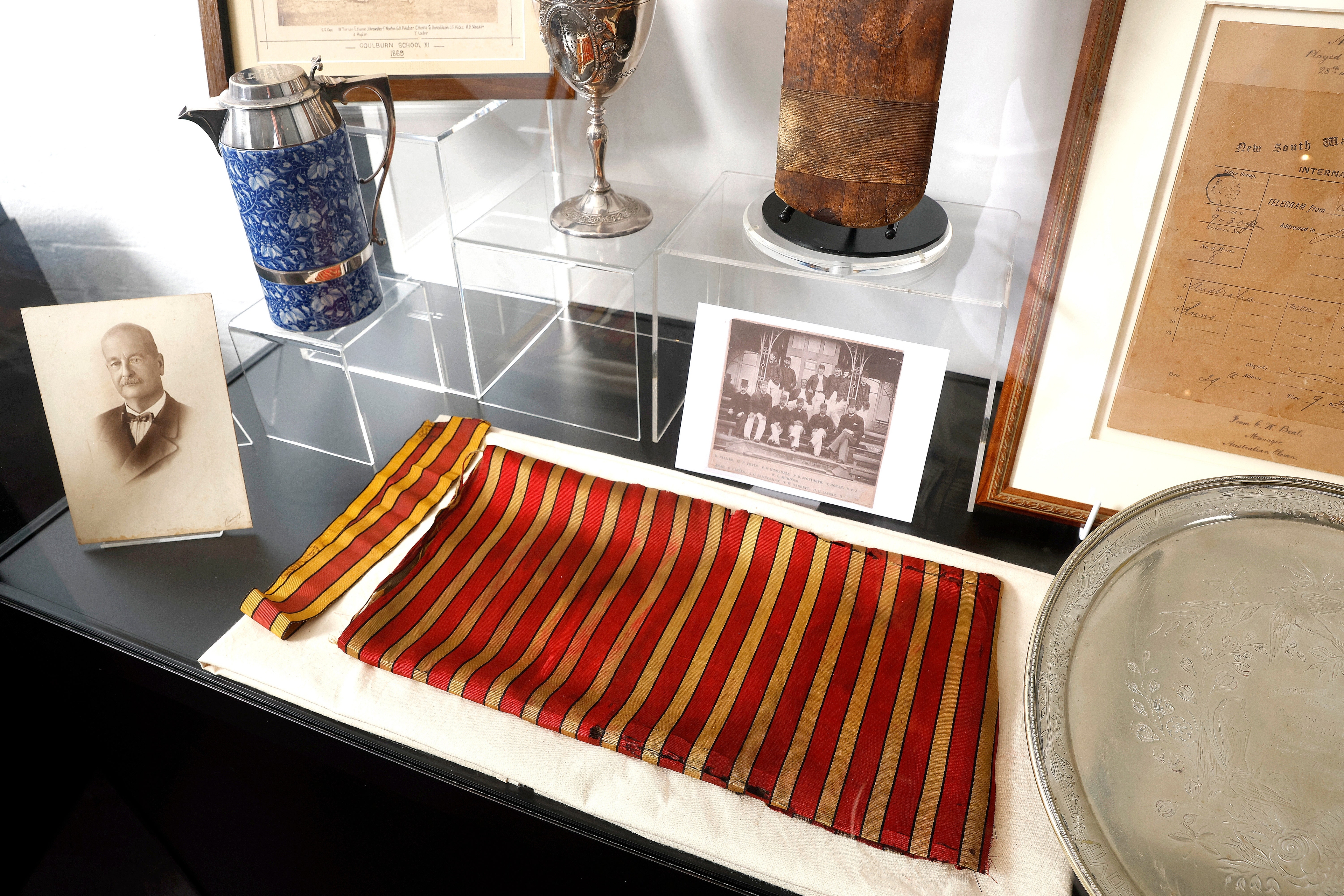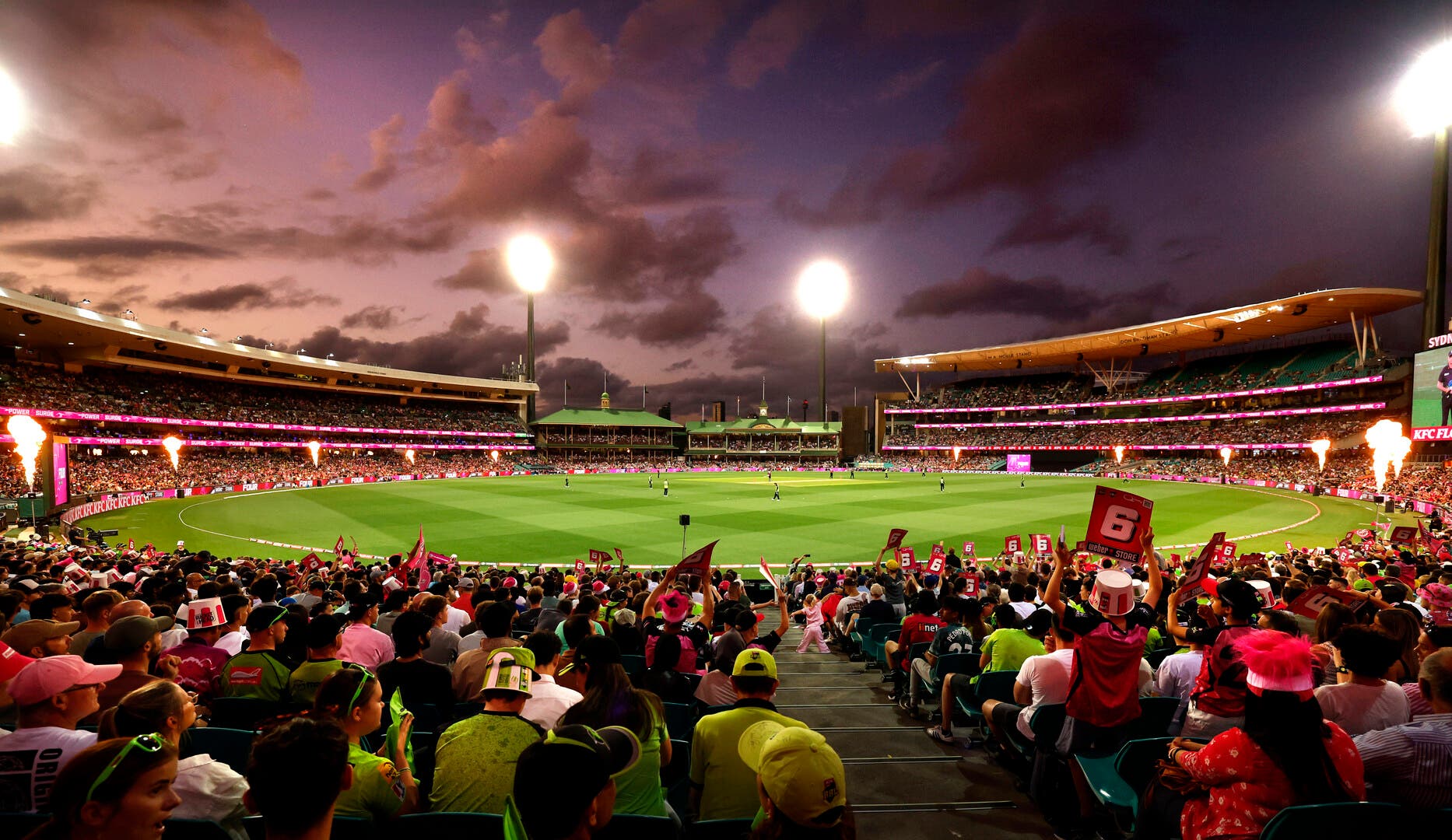
Hugh Massie’s Cricket Bat and 1882 Uniform Donated to SCG Museum
SCG
A cricket bat and uniform pieces worn by Australia’s Hugh Massie who top scored in the famous 1882 Test match at The Oval, are now on display at the Sydney Cricket Ground Museum thanks to the generosity of the Massie family.
“Hugh Massie has a strong connection to the SCG. He played in the first official Test match to be held as the SCG, captained Australia to victory at the ground, and later served as a treasurer and SCG Trustee,” said Kerrie Mather Venues NSW Chief Executive Officer.
“The SCG Museum is grateful for the generous donation by Hugh and John Massie, and for recognising the museum to preserve their great-grandfather’s memory,” she added.
“It was important to the family that our great-grandfather’s collection remained together and the SCG Museum was the perfect choice,” said Hugh Massie the great-grandson.
His brother, John Massie added, “We are delighted that our great-grandfather’s legacy will continue at the SCG, and we know that the archivists will take great care of these items for future generations to see.”
It is believed Hugh Massie used the bat to score his second innings 55 runs in 57 minutes from just 60 deliveries at The Oval in 1882, which saw Australia defeat England for the first time on English soil. The victory gave rise to ‘The Ashes’.
The cummerbund and boater hat band worn on the 1882 tour feature the striking yellow, black and crimson colours of Australian cricket from that era and are thought to be the only one of their kind in existence.
The SCG museum is open to the public as part of the SCG Tour on non-match days and can be accessed within the Members reserve on match days.
ADDITIONAL NOTES - HUGH HAMON MASSIE
- Despite a playing career restricted by business interests, Hugh Hamon Massie made a significant contribution to Australian cricket and the Sydney Cricket Ground.
- Born in 1854, Hugh Massie learnt to play cricket in Goulburn, N.S.W. by a schoolteacher who once taught W. G. Grace how to play cricket.
- Massie’s fine stroke play and powerful technique would see the young man go on to play 64 first class and 9 Tests, and power Australia to defeat W.G. Grace’s England in the infamous Test match at The Oval in 1882 which gave rise to the Ashes.
- Massie had turned down an invitation to tour England with the earlier Gregory and Murdoch tours largely because business interests did not readily permit taking the six months plus that these tours required. In 1882, Massie made the decision to tour England and became a part of Australian cricket and Ashes folklore.
- Australia wore the traditional white, and adopted the yellow, black and crimson for their blazers, cummerbund and boat hat band being the colours of the 96th Regiment.
- Batting in the second innings at The Oval, Massie scored 55 in 57 minutes from just 60 deliveries. It was the highest score of the match and was twice the score of any other player from the side except W. G. Grace who made 32 in the second innings. Hugh’s innings gave Australia a big enough lead for Fred Spofforth to bowl Australia to victory from which the Ashes legend was born. The defeat of England triggered The Sporting Times newspaper to print an obituary on the ‘death of English cricket’. The unexpected result largely overshadowed the contribution of Massie.
- Earlier on the same tour, Massie had opened for Australia against Oxford University and scored 206 from 265. It was the highest score by an Australian on debut in England until Don Bradman scored 236 against Worcestershire in 1930. J.C. Davis described him as ‘the most brilliant batsman of his time’.
- Massie declined any further international tours, preferring to concentrate on his banking career, but would later captain Australia in one Test at the SCG. It was reported that his astute bowling rotations in the final innings of the 1885 Test match in Sydney were pivotal in Australia’s six run victory.
- On a private visit to England in 1895, Massie was made an honorary member of the Marleybone Cricket Club (M.C.C.) and played for the Gentlemen England Eleven against Kent in a match celebrating the Jubilee of I Zingari.
- Massie returned to the Commercial Banking Company of Sydney, where he married future CBC general manager chairman Thomas Dibbs’ daughter Tryphena. They had three children, Hugh I Massie, Robert John Allwright ‘Jack’ Massie, and Tryphena Massie.
- His son, Jack Massie became an imposing left-arm fast bowler and represented the state in athletics, cricket, rowing, rugby and was also an amateur heavyweight boxing champion. His sporting career was cut short by service in World War I where he was wounded four times and received distinction for battles in Gallipoli and France.
- Massie’s association with the Sydney Cricket Ground continued following his playing career and he became a Treasurer and SCG Trustee, serving until the year of his death in 1938.




























